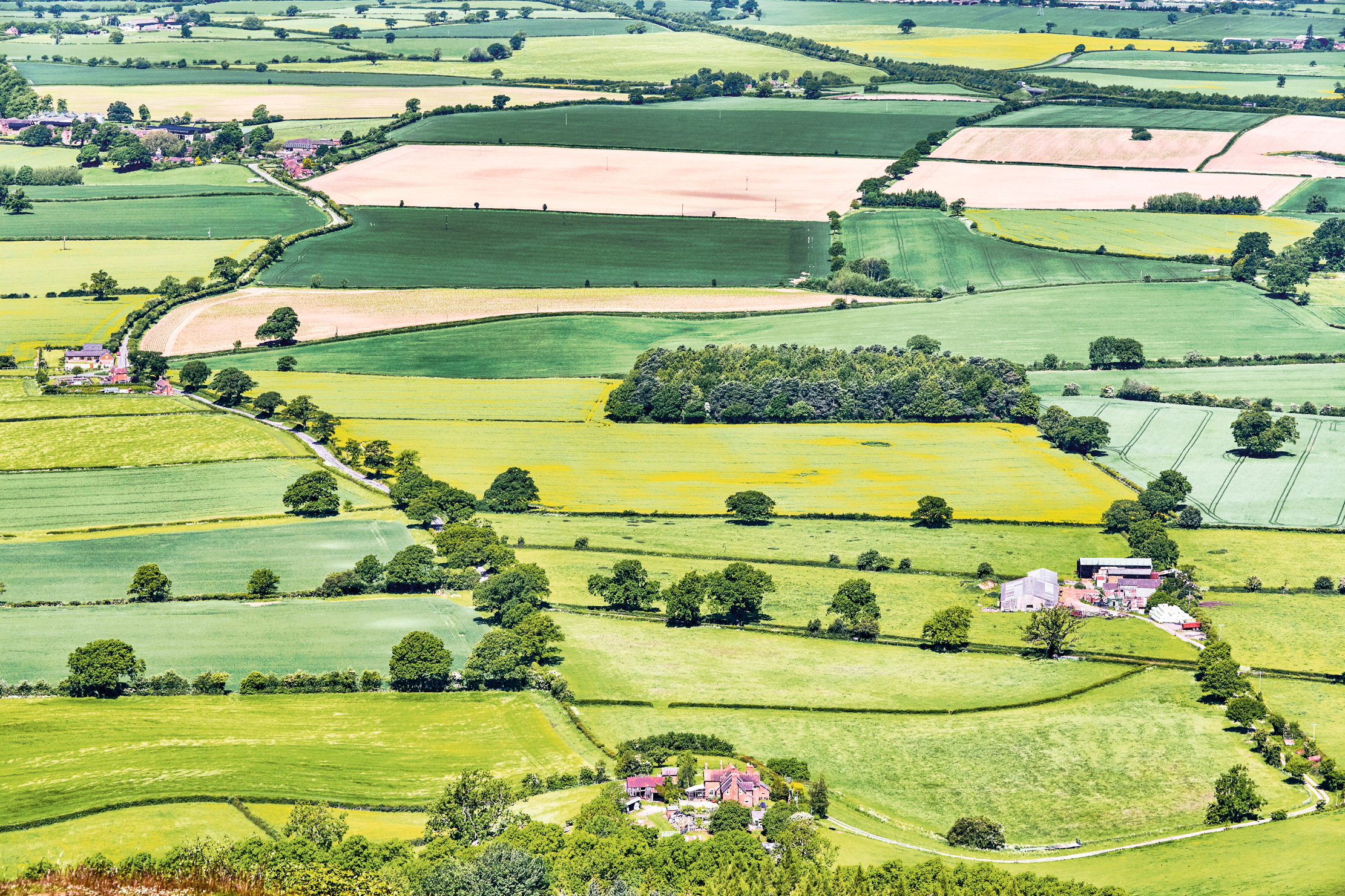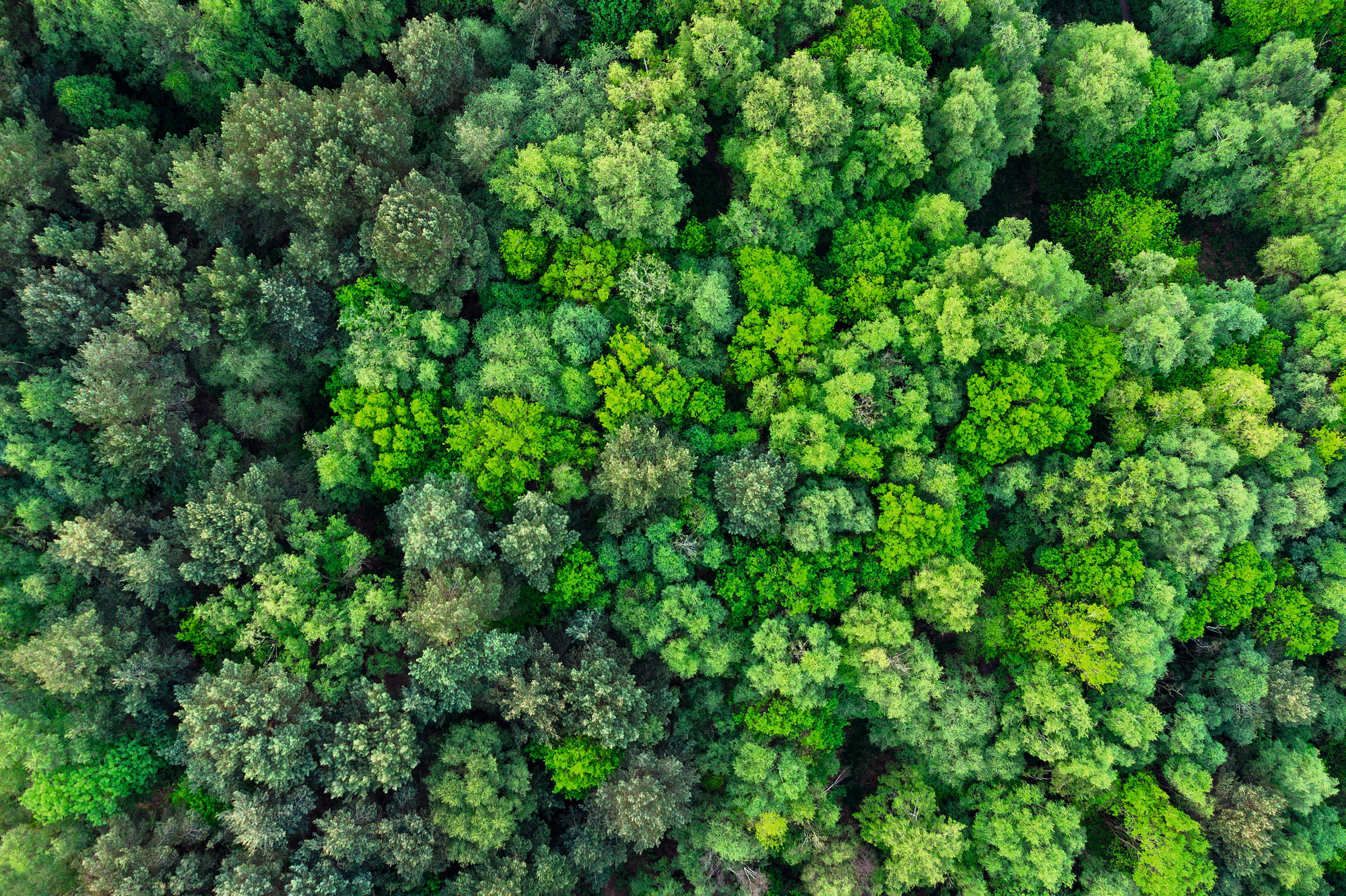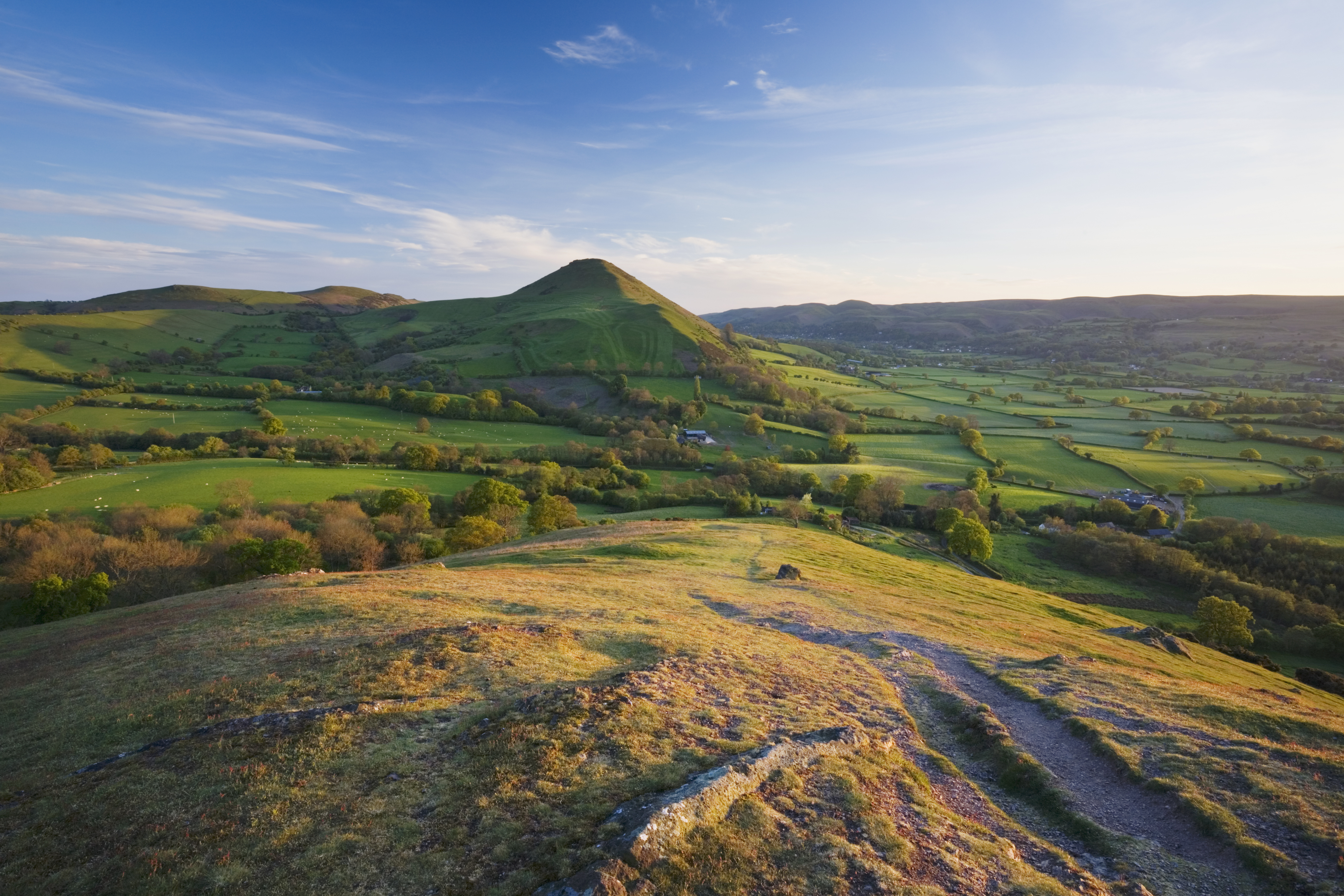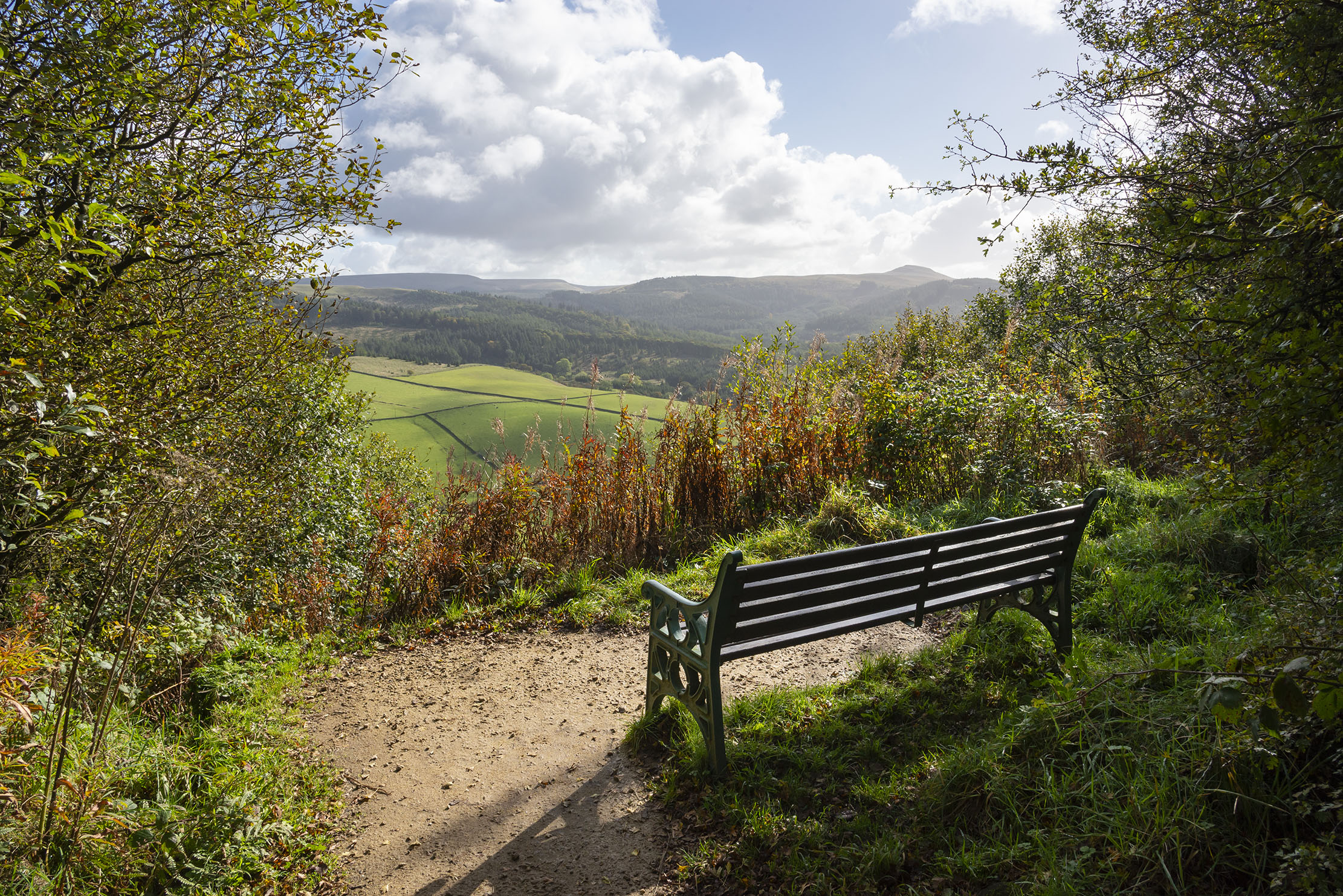What's in a colour? The mystery behind our obsession with green
The human eye can detect more shades of green than any other colour and they are matched by a bewildering variety of names, discovers Lucien de Guise


As the summer holidays approach, schools up and down the country will be singing the praises of England’s green and pleasant land. Jerusalem seems to have been the first time that greenness and pleasantness were equated with this island. More than a century after William Blake wrote the words, it became a hymn. It was taken up by the Suffragettes and, exactly 100 years ago, became the official anthem of the Women’s Institute. It has now acquired the status of unofficial national anthem, endorsed by David Cameron when he was prime minister.
Shakespeare is the poet the nation usually turns to for a burnishing of its self-image. The Bard of bucolic Warwickshire was, however, far behind Blake the London urbanite in his green credentials. For the earlier William, England was ‘This precious stone set in the silver sea’. John of Gaunt doesn’t specify the colour of the precious stone in his deathbed tirade against Richard II in the eponymous play. Shakespeare goes on to mention ‘a demi-paradise’, which would no doubt have been different from the present-day ideal. It could possibly have meant a full house paying top price at his Globe Theatre.
Before and after Shakespeare’s day, the colour green had few names and many diverse associations. Some were good, such as a 1562 Etymologiae that takes a modern, holistic ecotherapy view of green being ‘much comfortable to the sight of man’. Others tended to be bad. Artists liked to show the Devil wearing green and, in mystery plays, it was the colour of Judas’s clothing. It might represent sickness, as well as love, hope and youth. It was the colour of dragons and wild men, as well as young maidens. Shakespeare wrote of Cleopatra’s ‘Salad days’ when she was ‘green in judgment’.
Most of all, the Bard evoked jealousy through this colour. Whether it was the ‘green-eyed monster’ of Othello or ‘green-eyed jealousy’ of the merchant of Venice, Shakespeare created a beast that lives on. What he could not have foreseen is how green would come to embody Britain — or, at least, the English part of the Union. Nor the profusion of words that have come to describe it.

The human eye can apparently detect more shades of green than any other colour, matched by a bewildering variety of names in the English language. There are hundreds of them; far more than the Inuit have for types of snow.
The unexpected thing about all the variants of green in English is how few relate to England. Traversing the world, we encounter everything from Amazon to Zomp green. There is Eau de Nil — a romantic view of the River Nile popularised by Flaubert in the 19th century and continued by Alfred Hitchcock for his leading ladies — so why no Goring-by-Sea green or at least a Thames brown? Green was once considered to be the colour of water, rather than land. Before blue became the typical description, Chaucer gave us ‘sailing… waves green and high’. Shakespeare has Macbeth lamenting: ‘Will great Neptune’s ocean wash this blood/Clean from my hand?… Making the green one red.’
Shades of green that relate to other English locales are as rare as rivers. They abound elsewhere, however. There is Russian, Persian, India and Pakistan green. There is even a Brooklyn green, but the closest I can find to England is Erin. This romantic name for Ireland has geographical proximity to the UK, without quite getting there. Numerous alternatives with an Irish connection exist, from Leprechaun to Kelly. The latter is such an antiquated piece of stereotyping, I’m surprised it exists at all (being an American reference to the large number of immigrants with the name Kelly more than a century ago).
Exquisite houses, the beauty of Nature, and how to get the most from your life, straight to your inbox.
Closer to the Sceptred Isle than the Emerald Isle is something called Shire green. Although it sounds like a reference to Blake’s vision of England, nurtured by the loving rustic hand of Tolkien, this colour is somewhat ambiguous. Some people associate it with the horses, which are definitely not green.
Where an undeniably English name comes up, it’s usually a reference to the people, not the place: Lincoln green after the dyers of that town; Kendal green for the same reason. To be fair, most of the shades that seem to describe places really relate to products. There is Persian green for carpets or ceramics and Paris green for a paint pigment developed in 1814. Most famous of all is turquoise, which might raise some eyebrows among lovers of blue, but is defined as being ‘between blue and green’. To make it more confusing, the colour of the actual stone can change when in contact with skin and other environmental factors. The name is opaque, too. Known in English as a colour for 400 years, it is more reminiscent of Central Asia and Iran than Turkey. Celadon has taken an equally mysterious route into the English language, referring to an East Asian ceramic colour, but probably derived from a character in French literature of the 17th century.

Alcoholic beverages have also inspired hues. A recent innovation at the Pantone Color Institute — which has much influence in the field of colour recognition — is an off-white called English Sparkling, but French alcohol long ago spawned two important shades of green. Against the wholesomeness of Bordeaux and Burgundy is the sickliness of Absinthe and Chartreuse.
Both were controversial in the 19th century, one because of the appalling reputation of the drink itself, the other because the colour so divided opinions in its day. The same could be said for Oscar Wilde’s green carnation, together with his whole persona: ‘He had that curious love of green, which in individuals is always the sign of a subtle artistic temperament, and in nations is said to denote a laxity, if not a decadence of morals.’
Nature is where the real dividends of green are found, which certainly doesn’t include the dyed flowers favoured by Wilde and his circle. There is a staggering selection of natural greens. Most refer to plants and minerals, such as Myrtle, Pine, Lime, Jade, Emerald, Fern, Laurel, Mint, Tea, Avocado, Moss, Swamp, Artichoke, Pistachio, Asparagus, Parsley, Sage, Thyme — and, yes, there is a greyish-green shade known as Rosemary.
Once again, these colours don’t relate exclusively to England. The closest is very distant from Blake’s pastoral vision. It’s British Racing Green to the rescue. In fact, its first use as a racing livery was a tribute to Ireland. In 1903, the Irish Republic was still part of the UK and a handy venue for a pioneering motor race when racing was illegal on British roads. The colour has been maintained by Aston Martin in its recent successful Formula 1 seasons. The company may have a Canadian owner now, but every car is still made in Gaydon, Warwickshire — as green and pleasant a factory environment as exists in modern England.

A £150 million, 10-year programme to help save the countryside: 'Our job is to give money away to do good things'
Lottery funding is now being used to benefit Nature with a new 10-year programme. Annunciata Elwes reports.

Curious Questions: Why do all of Britain's dolphins and whales belong to the King?
More species of whale, dolphin and porpoise can be spotted in the UK than anywhere else in northern Europe and

Credit: Getty
Agromenes: The new government is already delivering with aplomb — and in the countryside, it's all to play for
Our countryside columnist takes a look at the early efforts and impressive ministerial appointments of the new Labour government in
Country Life is unlike any other magazine: the only glossy weekly on the newsstand and the only magazine that has been guest-edited by His Majesty The King not once, but twice. It is a celebration of modern rural life and all its diverse joys and pleasures — that was first published in Queen Victoria's Diamond Jubilee year. Our eclectic mixture of witty and informative content — from the most up-to-date property news and commentary and a coveted glimpse inside some of the UK's best houses and gardens, to gardening, the arts and interior design, written by experts in their field — still cannot be found in print or online, anywhere else.
